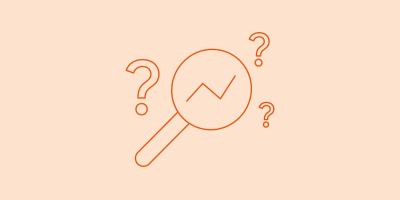The Importance of Zero-Party Data
Collection :
If you keep hearing about zero-party data, it’s because there’s been a seismic shift in the way organizations approach how they collect data on customers.
For years, marketers relied on third-party data to understand their audiences, with the data gathered via cookies or tiny digital files with bits of code. Companies apply them to websites to track visitors’ browsing history across devices and the Internet. Programmatic ad buyers (and marketers more generally) then use that data to support tactics like retargeting and personalization, as well as to improve decision-making and inform content development.
But that reliance on third-party data violates consumer privacy and agency, lawmakers and advocates argue. Without regulation, consumers can neither prevent the sale of their personal information nor ensure its erasure; hence, the passage of laws like the General Data Protection Regulation in 2016 and the California Consumer Privacy Act in 2018.
Such regulations and evolving public sentiment have caused tech companies to revise their thinking on customer data collection. In 2020, Google announced that Chrome would join the Safari and Firefox browsers in phasing out third-party cookies. Then, in 2021, Apple began blocking the invisible tracking pixels that marketers add to emails to gather information about customers and prospects, such as whether they opened the email and where they were when they did.
With access to these important sources of information cut off or sunsetting, marketers have begun weaning themselves off of third-party data. Instead, they’re focusing on first-party data and, increasingly, zero-party data. While both are critical, the latter has been turning more and more heads. Let’s take a closer look.
What is zero-party data?
A term first introduced by Forrester in 2018, zero-party data is information that a person voluntarily shares with an organization. First-party data, on the other hand, is information that organizations gather through their own online and offline sources. Online examples include pixels on organizations’ own websites that track how long a visitor stays on a page (as opposed to third-party data that tracks consumer behavior beyond an organization’s site and across devices). Offline examples include organizations’ data on customers’ purchase history at their brick-and-mortar stores or submitted feedback forms gathered at an in-person event.
Here’s another way to look at the difference between zero- and first-party data: You know how Netflix knows which shows you’ve watched? That’s first-party data because their systems and technology tell the company you logged on and binge-watched the first season of Derry Girls.
But do you actually like the show, or did you hate-watch it? Netflix can’t tell unless you rate it. When you do, that’s zero-party data. By ranking your preferences — five stars for the comedy Schitt’s Creek; one star for the supernatural drama Manifest — you willingly share information that Netflix would have no other way of knowing.
Here are a few more examples of zero-party data and how or where it might be collected:
- Email addresses. These can be pulled from event registration forms, newsletter sign-ups, and so on.
- Job titles. These can be gathered by making it a prerequisite to fill out a job title field to download a white paper.
- Preferred ice cream (or whatever item or topic you wish you knew about your audience). By using a social media poll to ask followers which flavor they prefer, you can find out what’s missing from your menu and what you should stock more (or less) of. In fact, polls and similar data-collection opportunities — surveys and conversational apps, for instance — are excellent sources of zero-party data.
In short, zero-party data is information respondents willingly share with a brand, and there are many ways to capture it.
Why focus on zero-party data?
While changing data-collection practices have increased interest in zero-party data, it’s not the only reason to invest in it.
Shifting public sentiment is another factor. As early as 2015, the co-CEO of Salesforce Bret Taylor disavowed retargeting, a form of digital advertising that targets consumers based on their online behavior. (Think, for instance, of visiting fuzzy.com because your mom wants pink house slippers with rabbit ears for her birthday and how those slippers appeared on display ads served on seemingly every website you visited afterwards.

Taylor wasn’t an anomaly but part of the vanguard. According to global data cited by Marketing Charts in 2019, younger generations also find retargeting “creepy.” Tracking consumer behavior online just ain’t cool.
No wonder, then, that legislators and advocates have pushed for and enacted data privacy laws, like the GDPR and the CCPA mentioned earlier. Indeed, 137 out of 194 nations have adopted data protection and privacy regulations, according to the United Nations Conference on Trade and Development. Given those regulations, marketers’ attraction to personal data voluntarily provided by consumers is just plain sensible.
Benefits of zero-party data
Now that we’ve provided the context behind the recently elevated profile of zero-party data among marketers, let’s review its many benefits.
First, there’s the automatic compliance it offers. When users freely give organizations their data, organizations don’t have to worry about complying with data privacy and protection laws that threaten company pocketbooks with hefty fines. Zero-party data is collected with the implicit consent of the owner.
This consent also invites organizations to pursue personalized marketing. In fact, consumers crave personalization. According to McKinsey, 71% of consumers expect businesses to design personalized interactions. So, when audiences share their data with brands, it signals trust and a vote of confidence. Consumers believe that the organization will protect their information and that the brand’s offerings are valuable enough to entrust it with their data. Greenlit in this way, organizations can create personalized customer experiences that encourage deeper relationships between brands and audiences. Expect higher engagement rates and more loyal customers as a result.
Another key benefit of zero-party data is its accuracy. Because it’s willingly proffered, most zero-party data will be truthful and correct. In fact, customers are more likely to go into detail with their responses when they know their answers can positively impact their end experience. So, if you’re a digital stylist, go ahead and ask customers their favorite colors or, if you’re an alcohol delivery service, their preference between fruity or spicy flavors. What you learn can be used to improve your customer-loyalty or rewards program. (For pointers on collecting zero-party data and applying insights from it to your loyalty and rewards programs, check out this webinar.)
You see, then, how zero-party data can reduce the number of irrelevant ads or misguided outreach efforts to customers and prospects. Through zero-party data, brands can better target their campaigns and initiatives, ensuring ad spend and other marketing efforts are optimized.
How technology can enrich your zero-party data marketing
With the value of zero-party data on the rise, you may be wondering how to acquire more of it — maybe through surveys of customers’ opinions on your competitors or polling on social media. While success on those fronts may be satisfying, where will you store the data you compile? More importantly, how will you combine it with the massive number of data points already at your disposal — purchase history, time on page, shipping addresses, and on and on? Then, once you’re able to combine those data points, how will you ensure the information is free of duplicates and other errors that bedevil marketers the world over?
A customer data platform — that’s the answer. The technology centralizes all your data and unifies it through identity resolution so that you’re not drowning in duplicates and bad info. A CDP with machine learning capabilities can then help you cluster and segment your audiences, thus improving personalization efforts and setting you up for improved engagement and conversion rates.
Such platforms are already in use by many enterprise-level organizations, with the number of CDP vendors multiplying. Indeed, according to the Gartner 2022 Market Guide for Customer Data Platforms, venture capitalists had invested more than $2.4 billion in CDP vendors through 2021.
What’s next?
The virtues of zero-party data are manifold: its compliance with consent requirements, the trust it builds with audiences, and the data accuracy it promises. To best maximize zero-party data, though, you’ll want to dig deeper into the technology that best facilitates its use. Our comprehensive guide to customer data platforms explains what they do and offers resources for further learning. You may also find articles that parse the differences between CDPs and DMPs and CDPs and CRMs helpful.
But for the ultimate rundown of CDPs, visit this page. The information you gather there could revolutionize your organization’s growth.


